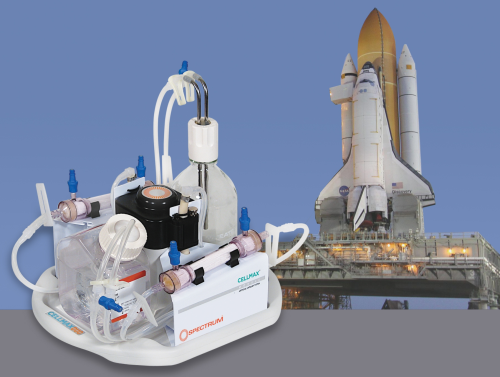
NASA will launch the Space Shuttle Discovery into low earth orbit, carrying a payload containing Spectrum’s CellMax bioreactors. The first experiment will evaluate embryonic stem cell differentiation in space, and will provide additional information about wound healing and tissue regeneration. Spectrum Laboratories has worked closely with NASA’s Dr Eduardo Almeida and Tissue Genesis Inc to create a custom housing for the bioreactor. Spectrum Labs’ engineers designed the specs and built the new housing in less than 10 days in order to meet the very tight experiment development schedule.
The second experiment, using a stock bioreactor, will investigate bacterial infection of mammalian epithelial cells in space. This experiment, developed by principal investigator Dr Cheryl Nickerson of Arizona State University, will try to figure out how human cells respond to bacterial infections in space and if normal processes of infection seen on Earth occur in the space environment. The testing will use a polyethylene CellMax bioreactor to cultivate the infections.
Parag Patel, product manager for Spectrum’s CellMax bioreactors said: “We at Spectrum Labs are very proud to participate in these two experiments that promise to help us understand not only how cells function in microgravity, but how this information could be use for the discovery of novel therapeutics.”




